Recently, I was checking in on a Facebook group when somebody posted about their dog suffering from copper storage disease. This condition can cause permanent damage to the liver. It’s something veterinarians are seeing more and more of, and copper in dog food may be to blame!
Copper Storage Disease has primarily been seen as a genetic disorder, occurring in only a handful of breeds such as Bedlington Terriers, Labrador Retrievers, Dobermans, Dalmatians, and West Highland White Terriers.
The disease can also be influenced by dietary factors.
Recently, liver health and copper disease have been receiving media attention. Dog breeds that are not traditionally seen with this condition are popping up with it.
This topic has been covered by the AVMA, Tufts, Cornell University, and other well-respected veterinary organizations. As always, we approach articles with a research and evidence-based mindset. Read on!
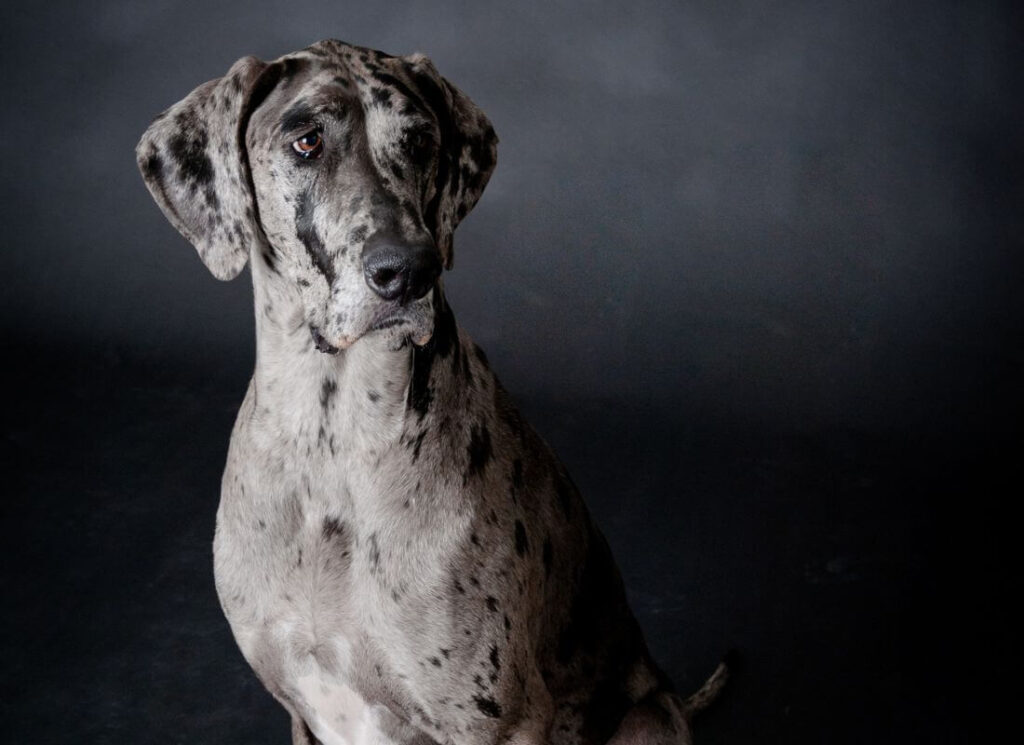
Symptoms of Copper Storage Disease in Dogs
Copper Storage Disease, also known as copper-associated hepatopathy or copper toxicosis, is characterized by an abnormal accumulation of copper in the liver, leading to liver damage.
Common signs of Copper Storage Disease include lethargy, decreased appetite, and weight loss. As the disease progresses, jaundice may become apparent, characterized by yellowing of the eyes, gums, and skin due to liver impairment.
Dogs with Copper Storage Disease may also exhibit increased thirst and urination, accompanied by a swollen abdomen caused by fluid accumulation.
Learn more about Copper-Associated Liver Disease in this article by Tufts 1
Behavioral changes, such as disorientation or seizures, can occur in advanced stages. Recognizing these symptoms promptly is crucial for seeking veterinary attention and initiating necessary diagnostic and treatment measures.
Veterinarians can detect early signs of disease by tracking liver health through blood tests. Additional diagnostic tools, such as an ultrasound, may be employed to exclude other liver-related conditions if there are concerns.
If an accumulation of excess copper in the liver is suspected, the veterinarian might suggest a liver biopsy to confirm the diagnosis.
How is Copper Storage Disease Treated?
Copper Storage Disease is treated with a strict low-copper diet and copper chelators which can bind to copper and remove it from the liver.
The medications used to treat Copper Storage Disease in dogs are expensive and have side effects.
For dogs that have accumulated dangerous levels of copper in their liver, however, this is the only way to improve their quality of life. Early detection is key.
There is a lot of misinformation out there about veterinary diets such as Hill’s L/D Chicken Flavor Dry Dog Food (Liver Care) or Royal Canin Hepatic, but this is a great example of a time when one is necessary. These diets are professionally researched, formulated, and tested to treat specific health conditions.
The alternative to a “prescription” low copper hepatic diet is home-cooked food. The only way to do this and fully ensure that copper intake is properly restricted is to work with a Board Certified Veterinary Nutritionist and follow the custom recipes exactly.
We always advise seeing a veterinarian if your pet has concerning or unusual health symptoms.
For more information on how Copper Liver Disease is treated, this article is very helpful. 2
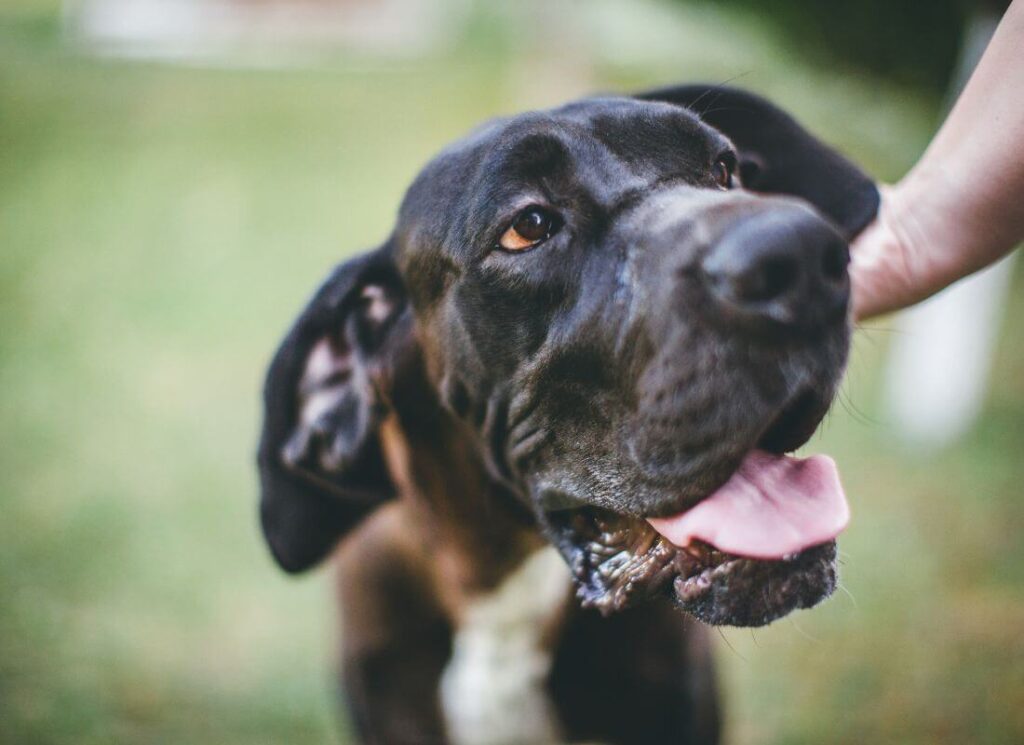
Does Dog Kibble Contain Too Much Copper?
Copper is an essential part of a balanced diet. However, similar to other essential nutrients like Vitamin C or D, an excess can pose problems. Over-supplementing certain vitamins and minerals, including copper, can lead to toxicity in dogs.
I dug into some of the veterinary articles on this topic, and yes, some researchers are concerned about copper in pet food3. The rate of Copper Storage Disease seems to have risen, in tandem with two major changes in the last 20 years:
- A switch from Copper Oxide to a more bioavailable form of copper, Copper Sulfate
- Pet food trends that encourage demand for extremely nutrient-dense “holistic” diets that contain a lot of organs, meat, and certain plants such as flax seed, mushrooms, and sweet potatoes
While this trend is only a correlation (causation has not been determined), it’s worth examining. Let’s dig into both of those in more detail!
1. Copper Oxide vs. Copper Sulfate
In 1997, a suggestion was put forth to discontinue the use of Copper Oxide in pet food. This proposal stemmed from a study revealing its limited absorption and utilization by the body (refer to the study HERE).4
Pet food companies, on the advisement of AAFCO, switched to other forms of copper that are more bioavailable.
They are commonly seen on pet food ingredient lists as copper sulfate or copper chelates such as copper proteinate, copper amino acid chelate, chelated copper, copper lysine, and copper glycinate (among others). These refer to various forms of copper compounds with organic molecules bound to them for enhanced absorption and utilization in the body.
This move away from the use of copper oxide was done even though there had not been widespread concerns about copper deficiency in dogs.
2. Consumer Demand for Meat-Heavy Dog Foods
In recent times, a growing occurrence of Copper-Associated Hepatopathy could potentially be linked to the rising consumer demand for nutrient-dense pet foods rich in animal-based components and organ meats, often referred to as “natural diets” or “holistic diets”.
Organ meats in particular are high in copper (yes, this includes freeze-dried liver treats).
It’s worth noting that while the concept behind these types of diets is that they are more “natural”, a truly “natural” canine diet is technically based on prey behavior and scavaging. For wild dogs whose meals must be chased or found, days can go by with very little balanced nutrition.
Put simply, nature is not nice.
Pet dogs fed commercially prepared and extremely nutrient-dense “natural” diets are often provided more nutrition in a compact package than was ever a reality for “wild” dogs. Additionally, pet dogs typically do not engage in the level of athleticism and endurance required by animals who don’t have the comfort of a warm home and ready access to water.
The daily abundance of nutrients can pose health risks, as over-supplementation and over-feeding are recognized as significant issues in pet nutrition.
Later in this blog, I present data on the copper concentrations in various pet food brands, and unfortunately, the findings often support this argument. Many expensive, nutrient-dense pet foods do seem to trend high in copper.
Additionally, there is a trend favoring pet foods containing vegetables high in copper, such as sweet potatoes, further complicating the issue.
Determining whether a specific formula contains excessive or dangerous levels of copper is challenging due to various factors. The bioavailability of copper varies among different forms, and its intricate interactions with other nutrients can impact how the body manages or eliminates the surplus.
Here is an interesting and informative video:
How Much Copper is In Dog Food?
Different pet food brands and formulas contain varying levels of copper. The Association of American Feed Control Officials (AAFCO) establishes a minimum amount of copper that all pet foods must contain.
However, AAFCO does not set a maximum limit on copper levels (unlike Europe, which does).
It’s important to note that you don’t need to start scrutinizing ingredient lists or searching for low-copper diets for your pet based solely on this information. As long as a pet food meets AAFCO guidelines, it should technically be safe for healthy dogs to consume, regardless of the copper levels.
Despite various opinions on copper in pet food, the reality is that there isn’t sufficient data to confirm whether excessive amounts are harmful to all pets. As a result, some veterinarians and researchers, including 13 who advised AAFCO against setting a limit on copper in pet food, suggest that pet owners refrain from excessive worry on this topic.
NutritionRVN on Instagram has an interesting and helpful take on this.
For dogs with liver failure, scientifically formulated low-copper diets known as “Hepatic” diets are crucial.
However, for typical, healthy pets, following AAFCO guidelines should be sufficient.
That aside, there is generally no need for an abundance of copper in pet food anyway. Thus, it may be advisable for concerned pet parents to avoid foods with excessively high levels.
The potential impact of excessive copper levels in pet food on all dogs is not yet definitively established. However, erring on the side of caution by avoiding foods with elevated copper levels is fine if you have concerns about your pet’s health.
How to Find the Copper Level of Dog Food
In many cases, the only way to find out how much copper is in your pet’s food is by calling them and asking. While not all companies disclose this information, reputable ones typically have it and are willing to provide it upon request. (Keep reading! I’ve done a bunch of digging for you and made a chart below).
Because we don’t currently know what a truly safe “upper limit” is, the goal should be to compare several brands and steer clear of those on the high side.
When you are looking for this information, find it on a dry matter basis. This is very important, and something I cover more in-depth below!
What is a Safe Amount of Copper for Pet Food?
Some researchers believe that copper in over-the-counter pet foods should be capped at 25 mg/kg or 25 PPM. Currently, AAFCO establishes only a minimum amount, and pet brands are left to determine the limit themselves. 5
The FEDAIF (European Pet Food Industry Federation) sets an upper limit of 28 mg/kg or 28 ppm for copper.
It may be advisable to choose foods that stay under 28 mg/kg whenever possible. Knowing that all AFFCO pet foods meet the minimum copper requirement necessary for health (remember, pets do need copper in their diet), a lower number is preferable.
During a recent wellness check for my pets, my fantastic veterinarian noted that over his decades of practice, he’s observed a rise in liver and kidney disease among pets. It’s become so prevalent that he now starts monitoring for early indicators of these conditions in pets age 6 and up.
We can’t be sure if copper is the definitive cause of that trend, but it does give me pause!
Here is an informational article from the AVMA (American Veterinary Medical Association) arguing that attention to copper levels in pet foods is needed. 6
I did a little market research for you, and have shared the results on the table below!

Copper Concentrations of Popular Dog Foods
I contacted the following companies directly to create a table, which is current as of January 2024. In creating this data, I intentionally chose brands and formulas based on the following criteria:
- Popularity in different pet food markets
- Word on the street (some brands are “known” to be higher in copper)
- Range of formulation types and proteins used
Most pet food companies have numerous formulas, so I pulled specific formulas at random from their product pages.
Some companies post copper content on their website. For the rest, I contacted each brand directly for this information. This list below is the most up-to-date data (2024) on copper levels in popular dog food brands.
As you’ll see on the chart below, the copper levels vary significantly across brands. Some appear notably high, while others are relatively low.
Particularly, hepatic diets are formulated with carefully controlled low copper levels, catering specifically to pets dealing with liver issues or copper storage disease. I’ve included a few of those on the list for comparison sake.
All values listed below are on a dry-matter basis, calculated with moisture removed. This standardizes comparisons between raw, fresh, and kibble products.
1 Mg/Kg = 1 ppm. For example, 13.00 Mg/Kg = 13 ppm.
Please note that just because the copper level appears acceptable, does NOT mean that the other nutrient and mineral levels are. Always verify the analysis for calcium/phosphorus too, especially when feeding large or giant breed dogs.
| Food Brand & Formula | Copper in Mg/Kg (Dry Matter) |
|---|---|
| Annamaet Grain-Free Manitok | 14.59 |
| Annamaet Ultra | 13.49 |
| Diamond Naturals Grain Free Beef & Sweet Potato | 17.00* |
| Eukanuba Large Breed Adult | 13.00 |
| Eukanuba Large Breed Puppy | 12.00 |
| Eukanuba Performance 30/20 | 11.00 |
| Eukanuba Puppy Food (Lamb) | 15.00 |
| Fromm Beef Frittata Veg | 26.37 |
| Fromm Bonnehill Farms Beefibowl Beef | 54.70 |
| Fromm Bonnehill Farms Turkibowls | 29.39 |
| Fromm Duck ala Veg | 13.23 |
| Fromm Gold Large Breed Adult | 13.36 |
| Fromm Heartland Gold Adult | 22.74 |
| Fromm Highlander Beef, Oats, and Barley | 17.67 |
| Hill’s L/D Chicken Flavor Dry Dog Food (Liver Care) | 7.00 |
| Instinct Raw + Kibble Blend Grain-Free Chicken | 15.53 |
| Instinct Raw Frozen Chicken | 39.00 |
| Instinct Raw Frozen Rabbit | 55.94 |
| Inukshuck Marine 25 | 39.00** |
| Nature’s Logic Canine Beef Meal Feast | 10.20 |
| Nature’s Logic Distinction Pork | 24.80 |
| Nutrisource Beef & Rice | 15.90 |
| Nutrisource Pura Vida Chicken & Brown Rice | 17.10 |
| Nutrisource Element Wild Range | 23.90 |
| Open Farm Grain Free Wild Caught Salmon | 19.57 |
| Open Farm Grass Fed Beef Gently Cooked | 26.88 |
| Open Farm Homestead Turkey Rustic Stew | 23.02 |
| Open Farm Open Prairie Raw Mix | 14.67 |
| Open Farm Lamb & Ancient Grains | 17.12 |
| Purina Dog Chow Adult (Beef & Rice) | 12.40 |
| Purina Dog Chow (Lamb) | 15.00 |
| Purina ONE Large Breed Chicken & Rice | 14.20 |
| Purina Pro Plan Complete Essentials Chicken & Rice | 16.90 |
| Purina Pro Plan Large Breed Chicken & Rice | 15.10 |
| Purina Pro Plan Sensitive Salmon Large Breed | 15.10 |
| Purina Pro Plan Sport 30/20 Chicken | 16.10 |
| Royal Canin Hepatic (Liver Care) | 7.00 |
| Spot & Tango Fresh Beef & Millet | 20.90 |
| Spot & Tango Fresh Lamb & Brown Rice | 20.40 |
| Spot & Tango Fresh Turkey & Red Quinoa | 19.70 |
| Spot & Tango Unkibble Beef & Barley | 21.90 |
| Spot & Tango Unkibble Chicken & Brown Rice | 14.60 |
| Spot & Tango Unkibble Cod & Salmon | 20.10 |
| Spot & Tango Unkibble Turkey & Sweet Potato | 15.90 |
| Stella & Chewy Raw Blend Red Meat | 45.40 |
| Stella & Chewy Raw Blend Wild-Caught | 24.20 |
| Stella & Chewy Raw Coated Cage Free Duck | 28.43 |
| Stella & Chewy Raw Coated Wild Caught Whitefish | 21.56 |
| Stella & Chewy Dandy Lamb (Raw) | 49.00 |
| Stella & Chewy Super Beef (Raw) | 44.14 |
| Stella & Chewy Tantalizing Turkey (Raw) | 19.57 |
| Stella & Chewy Purely Pork (Raw) | 33.30 |
| Victor Beef & Rice | 16.00 |
| Victor Grain-Free Ocean Fish | 16.00 |
| Victor Professional | 15.00 |
| Wild Earth Maintenance Golden Rotisserie | 26.80 |
| Wild Earth Maintenance Classic Roast | 20.70 |
| Wild Earth Performance | 19.80 |
| Zignature Venison | 15.15 |
| Ziwi Peak Air Dried Beef | 28.00 |
| Ziwi Peak Air-Dried Chicken | 26.00 |
| Ziwi Peak Air-Dried Mackeral & Lamb | 39.00 |
| Ziwi Peak Air-Dried Tripe & Lamb | 51.00 |
| Ziwi Peak Canned Lamb | 24.00 |
| Ziwi Peak Canned Venison | 22.00 |
*Diamond Naturals (Diamond, Taste of the Wild, Nutra Nuggets, Kirkland/Costco) provided me with incomplete and inaccurate information. This value may not be correct. I’ve included more information about this at the bottom of the post.
**Inukshuck Despite numerous requests, this particular brand has not responded regarding the dry-matter analysis of their copper levels. The as-fed amounts (which they did provide) range from a minimum of 27 mg/kg to as high as 39 mg/kg. It’s reasonable to anticipate that the dry-matter value will be even higher. Inukshuck is known to be a higher-copper brand.
There are thousands upon thousands of formulas and pet food brands to choose from. If you don’t see your food on the list above, contact the manufacturer and ask for the dry-matter copper value!
Avoid any company that refuses to provide this information or tries to divert your attention from it. If a company cannot or will not readily disclose the copper level in mg/kg on a dry matter analysis to anyone who asks for any reason, proceed with caution.
The copper levels in the chart above are accurate as of February 1st, 2024. It’s up to the consumer to verify those values, and to understand that the amount of copper in a food is not the whole story! Zinc, for example, can affect the bioavailability of copper.
The amount of copper a pet ingests may climb with the addition of toppers, supplements, and treats as well.
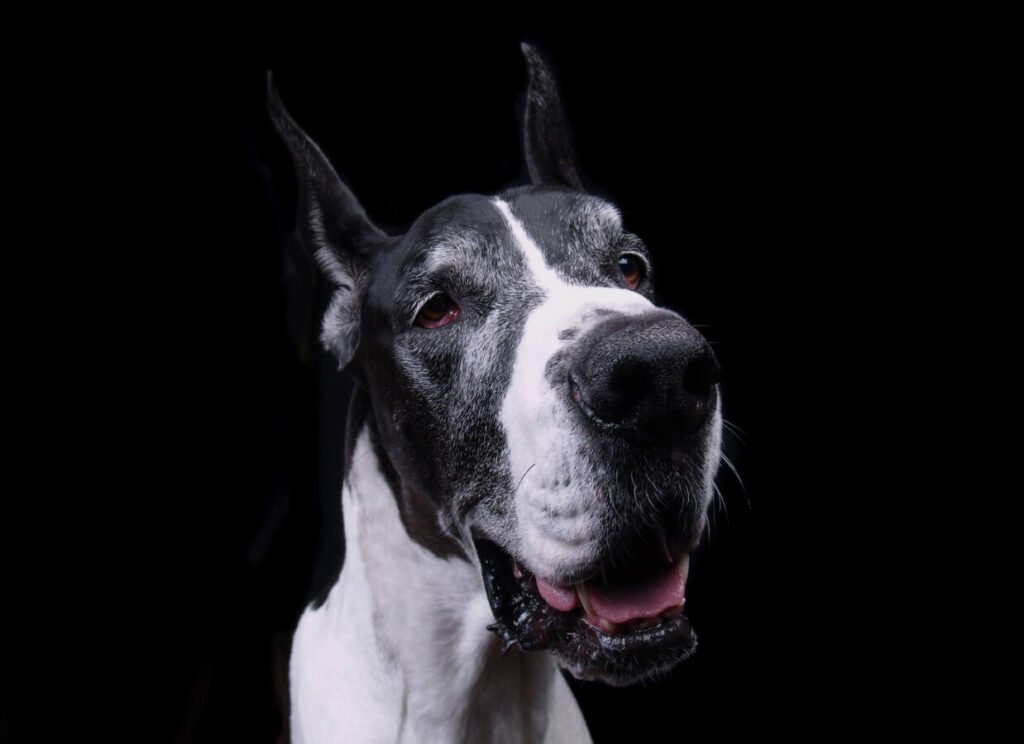
Which Pet Foods Are High in Copper?
High copper levels in pet food can be detrimental to the health of some pets, particularly for those who cannot effectively metabolize or excrete excess copper.
If you have a breed that is predisposed to copper storage disease, it is especially important to avoid nutrient-dense foods and toppers that are exceptionally high in copper.
While copper is an essential mineral for various bodily functions, excessive levels can lead to toxicity. It’s important to note that copper requirements vary among different species and breeds of pets, so what might be considered high for one could be normal for another.
Some ingredients commonly found in pet foods, treats, and supplements that are naturally high in copper include (but are not limited to):
- Organ Meats: Liver, kidneys, gizzards, and heart
- Fish: Salmon, trout, and shellfish
- Nuts and Seeds: Sunflower seeds, cashews, and flax seeds
- Legumes: Lentils, chickpeas, and beans
- Mushrooms: Shiitake, oyster, portabello, button
- Certain cereals: Oats, quinoa, and ancient grains
Pet owners should be cautious about feeding foods high in copper to pets, especially if they have conditions such as copper storage disease, liver disease, or are predisposed to copper toxicity because of their breed or pedigree.
Feeding commercial pet foods formulated by reputable brands that adhere to industry standards and conduct regular quality control measures can help ensure a balanced and safe diet for pets.
Many pet food brands have questionable practices that lead to inconsistencies in product safety and nutrient levels; copper, like calcium, should be well controlled. Additionally, many homemade diets (including Dr. Judy Morgan’s “Pup Loaf”) may contain excessive amounts of copper because of the meat and organs that are used.
Pets with diagnosed copper-associated liver disease also need to be on a heavily controlled diet with low copper levels, such as Just Food for Dogs Hepatic Diet, Hill’s L/D Chicken Flavor Dry Dog Food (Liver Care) or Royal Canin Hepatic.
Veterinarians and researchers recommend sticking to brands that meet WSAVA recommendations, including Purina, Hill’s, Science Diet, Eukanuba, and Iam’s.
Copper Bioavailability, Goat’s Milk, and Zinc
One study showed that goat milk (which contains copper)7, increased the bioavailability of copper in rats.
The widespread practice of incorporating goat milk into pet foods, especially those abundant in meat and organs, may not be the healthy nutritional practice it was once believed to be.
Zinc can increase the absorption of copper from the pet’s diet as well. If zinc and copper are not balanced together in the formulation of the pet food, it can cause health problems in pets.
Both Zinc and Copper are commonly found in “Multi-Vitamin” pet supplements.
A lot of questions are also being raised about the role of zinc in the development of Copper Storage Disease.
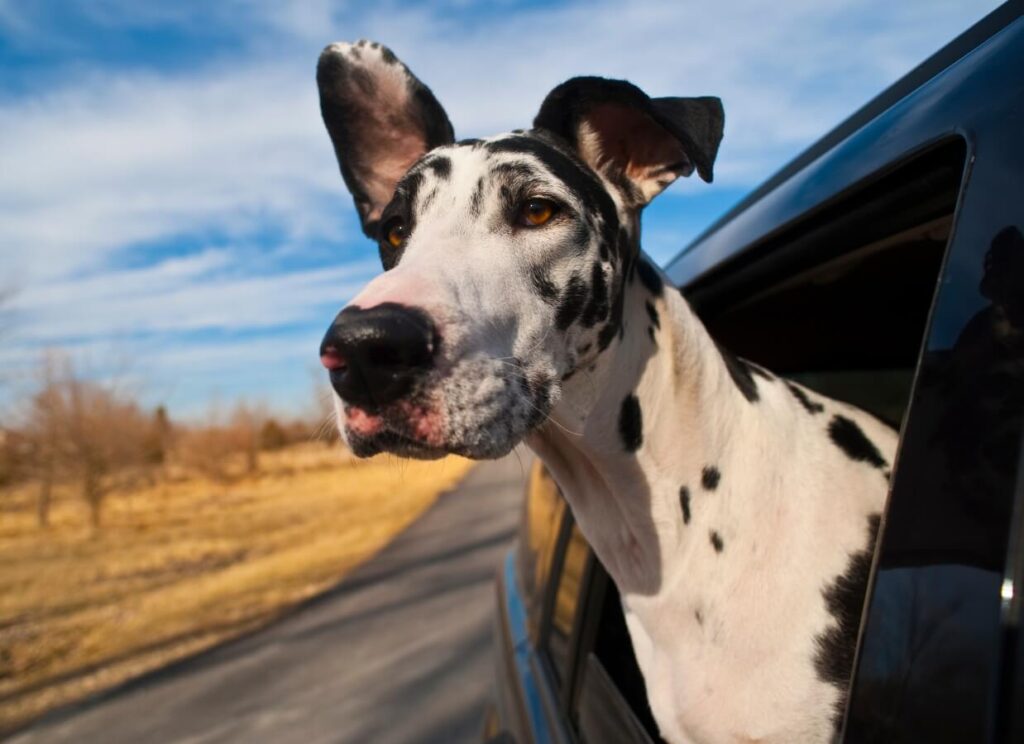
As-Fed vs. Dry Matter Calculation
When calculating nutrient content in pet food, it’s necessary to understand the difference between as-fed and dry matter basis. I’ll try to break this down into simple terms!
As-fed refers to the nutrient content of the food in its original, as-packaged, and as-fed state, including moisture content. (Yes, even kibble has moisture! Around 10%).
Dry matter removes the moisture content from the equation to provide a more accurate representation of the nutrient composition.
This distinction is crucial because moisture content can significantly affect nutrient concentrations, especially in canned, raw, fresh, or wet foods where moisture levels are higher.
By converting nutrient values to a dry matter basis, pet owners and professionals can make more accurate comparisons between different pet food products.
When evaluating copper content in pet food, I recommend comparing only the dry-matter value.
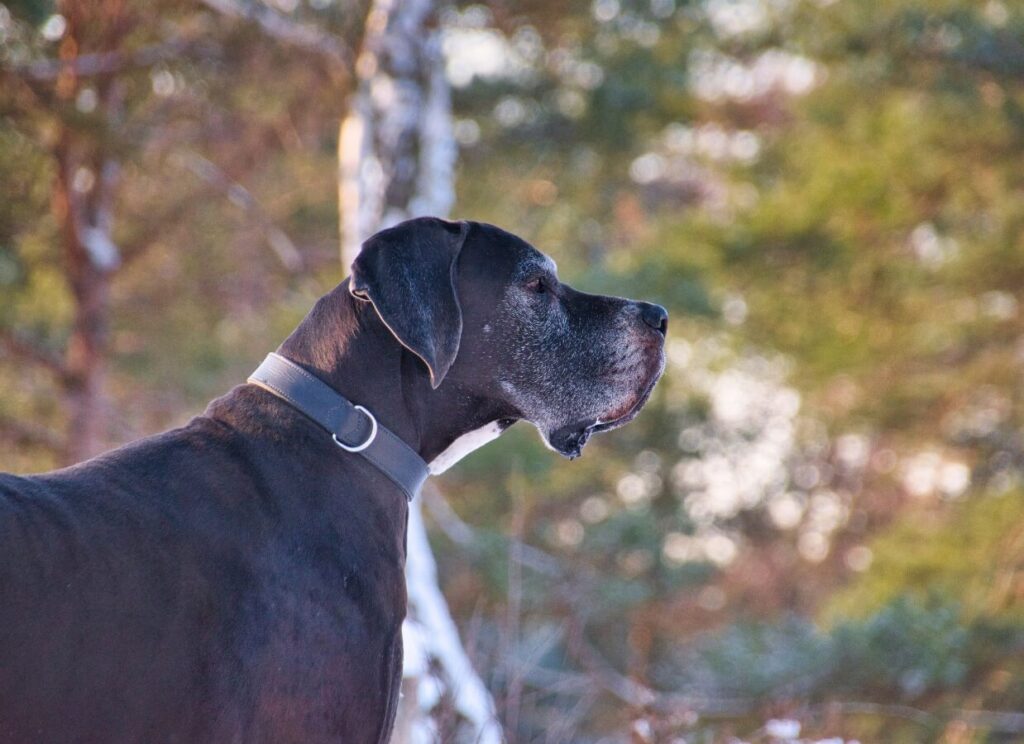
Can I Detox My Dog from Copper & Other Heavy Metals?
If you are concerned your pet has been ingesting too much copper, you need to talk to a veterinarian.
The concept of “detox” is often oversimplified or exaggerated in popular culture, leading to misconceptions about its effectiveness and necessity. While the body does have natural processes for removing toxins, such as through the liver and kidneys, the idea of undergoing specific “detox” programs or interventions to rid the body of accumulated toxins beyond what these organs can handle is not supported by scientific evidence.
Many products and treatments marketed as “detox” methods lack rigorous scientific validation and may even be harmful. It’s essential to approach claims of detoxification with skepticism and prioritize evidence-based practices.
If your veterinarian is concerned about copper storage or other liver problems, they will recommend an appropriate diet and may prescribe medication to help.
Milk Thistle Detox for Dogs
A common ‘detox’ remedy suggested by pet owners and certain influencers is milk thistle (“Silymarin”).
Expanding on the limited efficacy and safety research surrounding silymarin, I’d like to note that while it’s often promoted as a natural liver detoxifier, scientific evidence supporting its effectiveness and safety in dogs is limited.
Don’t skip seeing the vet because “Susie on Facebook” told you to give your dog a “liver cleanse” with milk thistle instead.
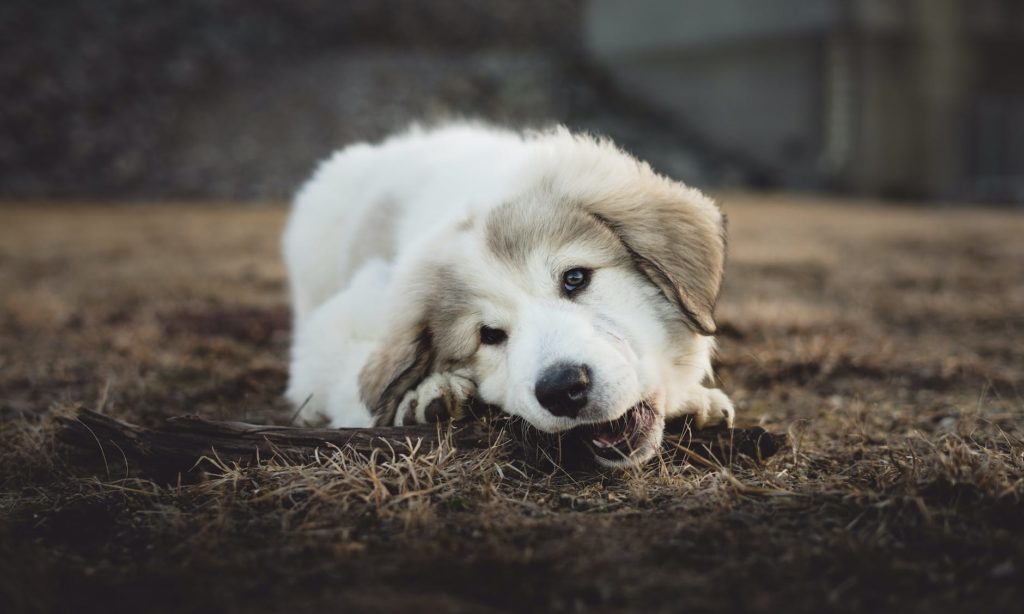
Low Copper Dog Food
Low copper dog food brands cater to the dietary needs of dogs requiring reduced copper intake, such as those with copper storage disease (hepatopathies).
These brands carefully formulate their recipes to contain minimal copper levels, ensuring the nutritional balance necessary for optimal canine health. Companies such as Hill’s Science Diet, Purina, and Royal Canin create specialized veterinary diets backed by research for this exact purpose! These foods typically require approval from a veterinarian.
By providing controlled copper content, these specialized dog foods help manage copper-related health conditions, promoting overall well-being and longevity in affected dogs.
For dogs that have not been diagnosed with copper storage disease or hepatopathies, it would be advisable to stick to well-formulated diets from brands such as Purina, Royal Canin, Hill’s, and Eukanuba. These diets’ copper levels consistently sit in a normal range, well below the European FEDAIC established maximum of 28 mg/kg.
If you’re considering preparing a home-cooked diet for your dog with conditions such as copper storage disease or any other health issue, it’s recommended that you work with a Board Certified Veterinary Nutritionist. Find one HERE.
Voyager Dog Food (Formerly The Scoop)
After losing a dog to diet-associated Copper Storage Disease, a veterinarian created a pet food company specifically focused on eliminating this problem. The brand claims to use no Copper Sulfate or chelated copper in their formulations, instead relying on natural copper sources from meat and organs.
I inquired with Voyager Food for information on their copper, calcium, and phosphorus levels as this information was not easy to find on their website. Please note, that none of their formulas are appropriate for large or giant breed puppies.*
From what I can tell, a Ph.D. Nutritionist was involved in the formulation of the food; however, it is unclear if that person is on staff or simply a consultant.
Further, unless I learn otherwise, we can assume the food is co-packed in a large factory that makes many other brands.
So while it may be a promising option for some pet owners, I’m not convinced it’s the best or only option.
*Voyager Foods responded to my inquiry about feeding large and giant breed puppies, to which they replied: “At the puppy stage no, but we have seen the diet do great for that 6-month and up range. For us to meet that requirement for puppies we would have to add a copper supplement which we truly believe would go against everything we stand for.”
I would not feed this to any large or giant breed puppy under the age of 18 months of age.

How to Prevent Copper Storage Disease in Dogs
Because research is still needed to fully understand why diet-associated copper storage disease is on the rise, and why some dogs are more susceptible than others, there are very few regulations or recommendations for this.
Based on the data I’ve collected, I think it’s safe to say that the following practices could help minimize risk in some pets:
- Feed a well-balanced diet with copper below 28 mg/kg, dry-matter basis
- Take it easy on offering food, toppers, and treats that contain a lot of copper
- Avoid regularly creating nutrient-dense food bowls that are loaded with high-copper ingredients such as goat milk, organs, flax seeds, mushrooms, and sweet potatoes
- Do not give “multi-vitamin” supplements that contain copper and/or zinc
- Reduce all of the above factors as much as possible if you have copper pipes or use well water that is untested and/or unfiltered
- Stick to WSAVA-compliant food brands such as Purina, Hill’s, and Royal Canin
- See your veterinarian often for checkups, and ask about monitoring liver and kidney health
As always, if you are making a homemade diet for your pet (no matter the recipe), consult with a Board Certified Veterinary Nutritionist.
Are you concerned about copper in your pet’s food? Have you had a problem with a pet experiencing copper storage disease or health problems related to the liver or kidneys? Please leave your comment below!
I, for one, look forward to seeing a LOT more research on this topic.
Footnotes
- Copper Associated Liver Disease in Dogs ↩︎
- DVM 360 Diagnosing & Treating Canine Copper Associated Hepatopathies
08/01/2018 ↩︎ - Cornell Researchers Warn of Excess Copper in Dog Diets
Article
By Greg Cima
March 17, 2022 ↩︎ - Cupric oxide should not be used as a copper supplement for either animals or humans
DH Baker
The Journal of Nutrition, 1999•academic.oup.com ↩︎ - AAFCO Reaffirms Guidelines on Copper in Dog Food ↩︎
- Is it Time to Reconsider Current Guidelines for Copper Content in Commercial Dog Foods?
American Veterinary Medical Association ↩︎ - Goat Milk Has Beneficial Effect on Bioavailability of Copper in Rats
↩︎
*Diamond Pet Food Response to Copper Levels in Pet Food
When I first inquired about copper levels in Diamond Pet Foods (a manufacturer whose brands include Diamond, Taste of the Wild, Kirkland/Costco, 4 Health, and Nutra Nuggets) they responded by telling me that all foods have 17 mg/kg of Copper.
Having noticed that all other pet food brands had variable copper levels based on the formula, I inquired further. It seemed odd to me that every formula had exactly 17 mg/kg.
It took them two days to respond, at which point a veterinarian returned this note to me:
“The copper level is an average level based on the typical analysis across the formulas as the majority of the copper in the recipes comes from the mineral premix. Ingredients that contribute significant copper, such as liver, are not included in any of our recipes.“
D. Wilhite, DVM
Veterinary Team [Diamond Pet Foods]
This clues me into two major observations of Diamond pet foods:
- They don’t have, or won’t share the specific copper levels of each formula (as they provided me with an “average” across all formulas
- Consequently, they might not be consistently testing and verifying copper levels in their pet foods through laboratory analysis, which raises concerns regarding quality control
- Diamond Brand does NOT meet WSAVA recommendations, as one of the guidelines is that the pet food company should be able to provide the nutrient level of all essential nutrients (which they have failed to do)
During my discussion with Diamond regarding pet food, they indicated that they do not employ a qualified nutritionist (DACVN or PhD in Nutrition) on their staff and primarily engage with consultants.
Interpret this information as you see fit; however, to me, it raises several red flags, especially if I’m concerned about copper in my pet’s food.




